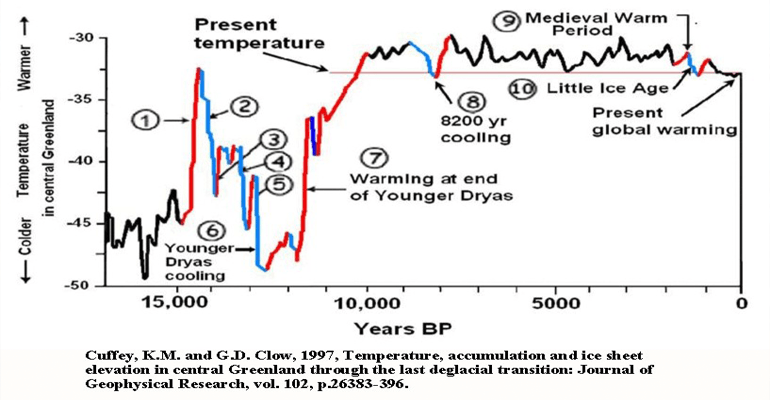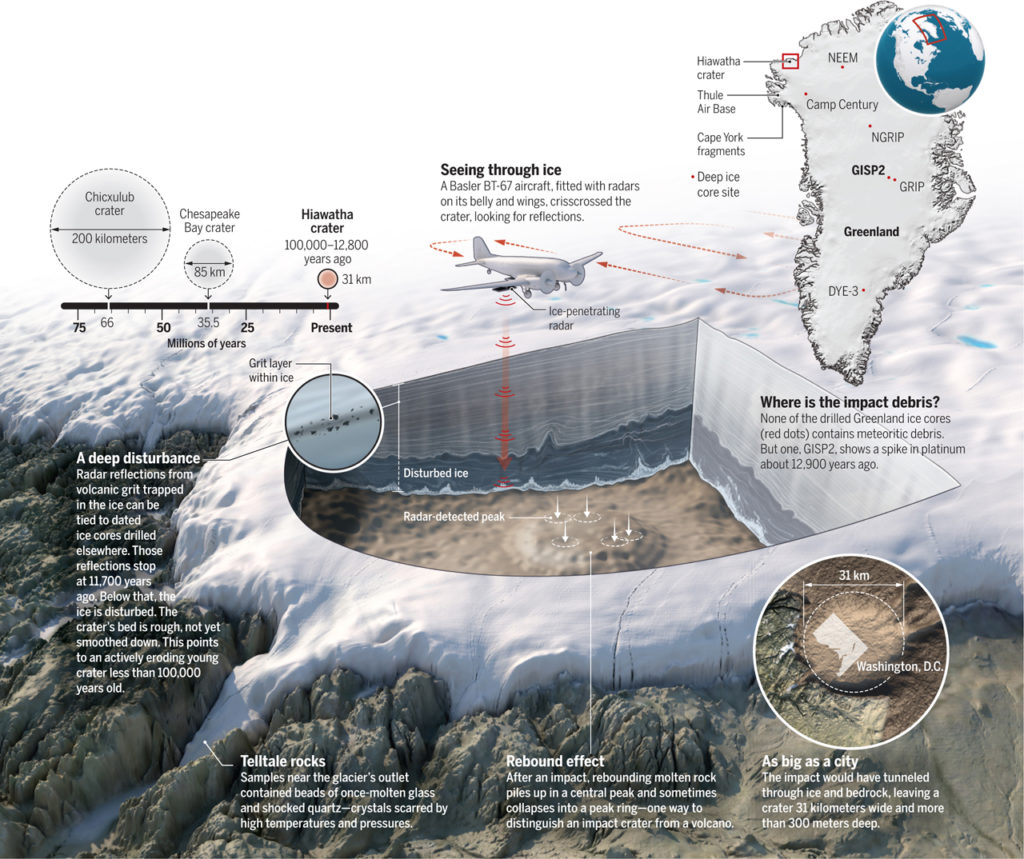Younger Dryas Impact Hypothesis: Climate Shocks and Lost Histories
The Younger Dryas impact hypothesis is more than a scientific debate — it may be a crucial key to understanding how sudden climate events reshaped human history, drowned coastlines, and perhaps erased entire chapters of civilization.
Climate Before, During, and After the Younger Dryas
As the last Ice Age waned about 14,700 years ago, Earth entered a warm interlude called the Bølling–Allerød interstadial. Temperatures climbed rapidly, glaciers retreated, and ecosystems flourished. Then, around 12,900 years ago, everything changed:
-
Phase 1 — Pre–Younger Dryas Warm Period
-
Warming climate, melting ice sheets, rising biodiversity
-
Early human groups expanding across continents
-
-
Phase 2 — The Younger Dryas Cold Snap (c. 12,900–11,700 years ago)
-
Abrupt temperature drop of up to 10 °C in a decade (Greenland ice cores)
-
Collapse of megafauna populations
-
Sudden cultural shifts (e.g., decline of Clovis culture)
-
-
Phase 3 — Post–Younger Dryas Rapid Warming
-
Climate rebounded sharply
-
Sea levels surged—about 120 meters total rise since the last glacial maximum
-
Coastal lowlands and potential ancient settlements were submerged
-
This climatic whiplash was so sudden and severe that it left clear markers in ice cores, lake sediments, and archaeological layers worldwide.

The Younger Dryas Impact Hypothesis
Proposed in 2007, the hypothesis argues that a cometary or meteoritic airburst over North America triggered the Younger Dryas. Key evidence includes:
-
Platinum anomalies found at over 50 sites on multiple continents
-
Microspherules, nanodiamonds, and other high-temperature impact markers
-
Extensive charcoal layers, indicating massive wildfires
-
Recent discoveries of comet airburst evidence in Syria (Phys.org, 2024)
Unlike a crater-forming impact, these airbursts could devastate ecosystems without leaving a clear crater — similar to the 1908 Tunguska event.

Sea Level Rise and Lost Coastal Civilizations
The end of the Younger Dryas coincides with rapid glacial melt and rising sea levels, reshaping continents and drowning ancient coastlines. If human societies existed along these coasts—as Graham Hancock and others suggest—entire cultural landscapes may now lie submerged on continental shelves, awaiting rediscovery.
Scholars Who Challenged the Timeline
A growing number of researchers and thinkers have questioned the orthodox timeline of civilization, suggesting that advanced knowledge may have existed before the accepted “beginning” of history:
-
John Anthony West & Robert Schoch
-
Proposed that the erosion patterns on the Sphinx indicate prolonged rainfall — evidence pointing to construction during a wetter, “Green Sahara” period, possibly thousands of years earlier than conventional dating.
-
-
Robert Bauval
-
Noted that the layout of the Giza pyramids aligns with the Belt of Orion as it appeared in the sky around 10,500 BCE, implying either symbolic reference to an ancient “Zep Tepi” (First Time) or construction based on very ancient astronomical knowledge.
-
-
Graham Hancock
-
Brought these ideas to a broader audience, arguing that a forgotten civilization may have flourished before the Younger Dryas, later wiped out by cataclysm and remembered only in myth.
-
While controversial, these perspectives have forced the academic world to revisit archaeological assumptions and reconsider the possibility that major monuments may encode deep time and lost knowledge.
Key Concepts at a Glance
-
Abrupt climate events can reset human history in decades, not centuries.
-
Evidence supports a cosmic impact or airburst around 12,900 BP.
-
Sea level rise may have submerged ancient coastal settlements.
-
Erosion patterns and star alignments at Giza suggest deeper antiquity.
-
New discoveries (e.g., White Sands footprints) keep pushing back the human timeline.
-
Many ancient records may have been lost to natural disasters, sea-level rise, and library burnings.
Open Questions
-
How many civilizations may have existed and vanished during these climatic upheavals?
-
What knowledge might have been lost beneath rising seas and burning skies?
-
Could future discoveries rewrite the origins of organized society yet again?
-
How many similar cataclysms have punctuated our deep history?
- Who built all the megalithic structures all over the planet?
Additional reading:
- The Younger Dryas Impact Hypothesis Research Group
-
Schoch, R. M. (1992). Geological Analysis of the Great Sphinx.
-
Bauval, R. (1994). The Orion Mystery.
-
Hancock, G. (2015). Magicians of the Gods.
- New Evidence supporting the Younger Dryas Impact Hypothesis





